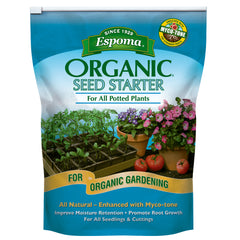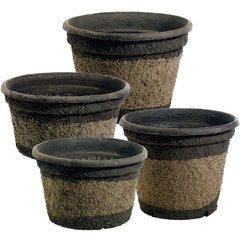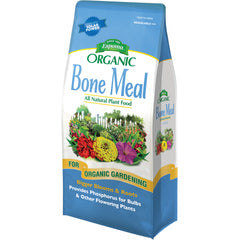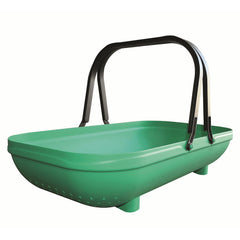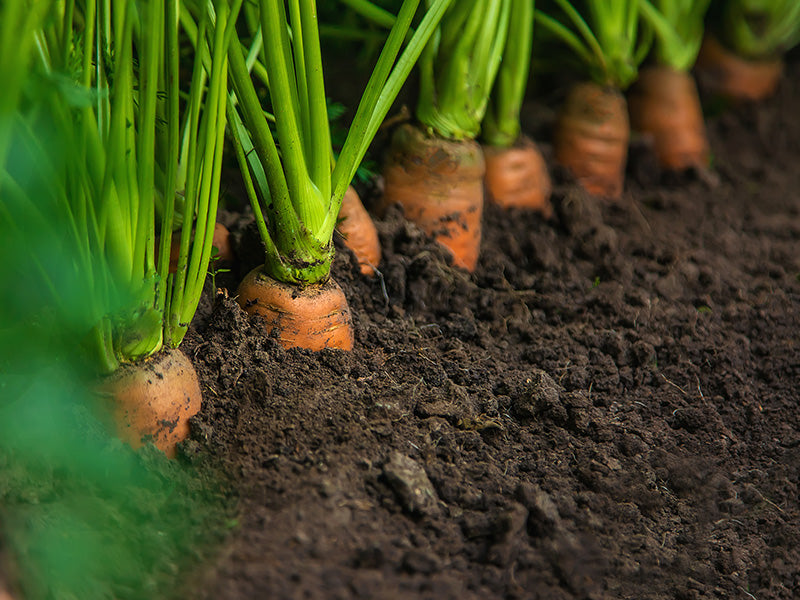
Herbaceous
Carrot
USDA Zone: 3–10
Lifecycle: Annual
Mature Size: 0.5–1 ft. tall
Native Region: Iran/Afghanistan
Sunlight Requirements: Full Sun
Learn about: Care, Seeding, Planting and Potting, Feeding, Winterizing, Harvesting and Pruning

USDA Zone: 3–10
Lifecycle: Annual
Mature Size: 0.5–1 ft. tall
Native Region: Iran/Afghanistan
Sunlight Requirements: Full Sun
Learn about: Care, Seeding, Planting and Potting, Feeding, Winterizing, Harvesting and Pruning
Caring for your carrot crops will produce a bountiful harvest for everything from salad to cake. Carrots love 6-8 hours a day of full sun but are okay with late-afternoon partial shade, especially in hotter areas. Use well-draining, slightly acidic soil that doesn’t have clumps or rocks. Give carrots a minimum of one inch of water per week and consider mulching for moisture and temperature management. The ideal growing temperature range is 55 to 75 degrees.
Plenty of pests will be after your carrots. Use netting and fencing to keep out wild animals that want to feast on the leaves. Row covers will assist with rust flies and carrot weevils. Rotate the plants to guard against nematodes and diseases.
Carrot seeds can be ground-planted 2-3 weeks before the final spring frost — but if you need an earlier start, you can seed them indoors. Fill a tray with seed starting mix, create quarter-inch deep holes two inches apart and plant 2-3 seeds per hole. Lightly cover and pat the seeds. Provide 12 hours of sunlight or grow lights per day and water using a can or spray bottle. The seeds will take 2-3 weeks to germinate. When the seedlings are 1-2 inches tall, thin the weaker seedlings so the strongest remain.
Carrots are a great candidate for succession planting, which is when you plant or transplant every two weeks during the spring for a continuous harvest. In hot climates, you may want to plant in the late summer or early fall. Plant seedlings 2-3 inches apart in rows that are separated by 12-18 inches. Seeds can be scattered in shallow rows and thinned to this 2-3-inch spacing once they are established. For potted carrots, choose containers that are at least a foot deep and use potting mix.
A carrot crop benefits from three stages of fertilization to enrich the soil. Add fertilizer during the initial planting/transplanting, when the tops are about four inches tall and once more when they’re about eight inches tall. Use a balanced or low-nitrogen fertilizer; high-nitrogen formulas will produce great tops but weak roots. Organic options like compost, wood ash and bone meal are excellent carrot fertilizer.
Carrots are almost always grown as annual plants, but if you want them to be biennial plants that develop flowers and seeds in year two, winterization is necessary. Overwintering will also let you harvest in the cooler seasons or store developed carrots for future use. Add a 2-4-inch thick layer of organic mulch and use a frost blanket if needed. Trim the tops down to about a half-inch long to preserve moisture.
While carrots don’t need to be pruned, thinning helps the remaining plants grow larger. Along with the first thinning of seedlings, do another thinning 3-4 weeks later based on recommendations for your plant variety. Gently pull the carrots from the ground and scoop some more soil around the surviving plants to get them more nutrients.
Carrots reach full development when the tops are 10-12 inches tall and the shoulders are three-quarters to one inch across. Loosen the soil around the carrot with a trowel or spade, grab near the foliage base and pull upwards. Cut the leaves off immediately to help the root retain moisture.











